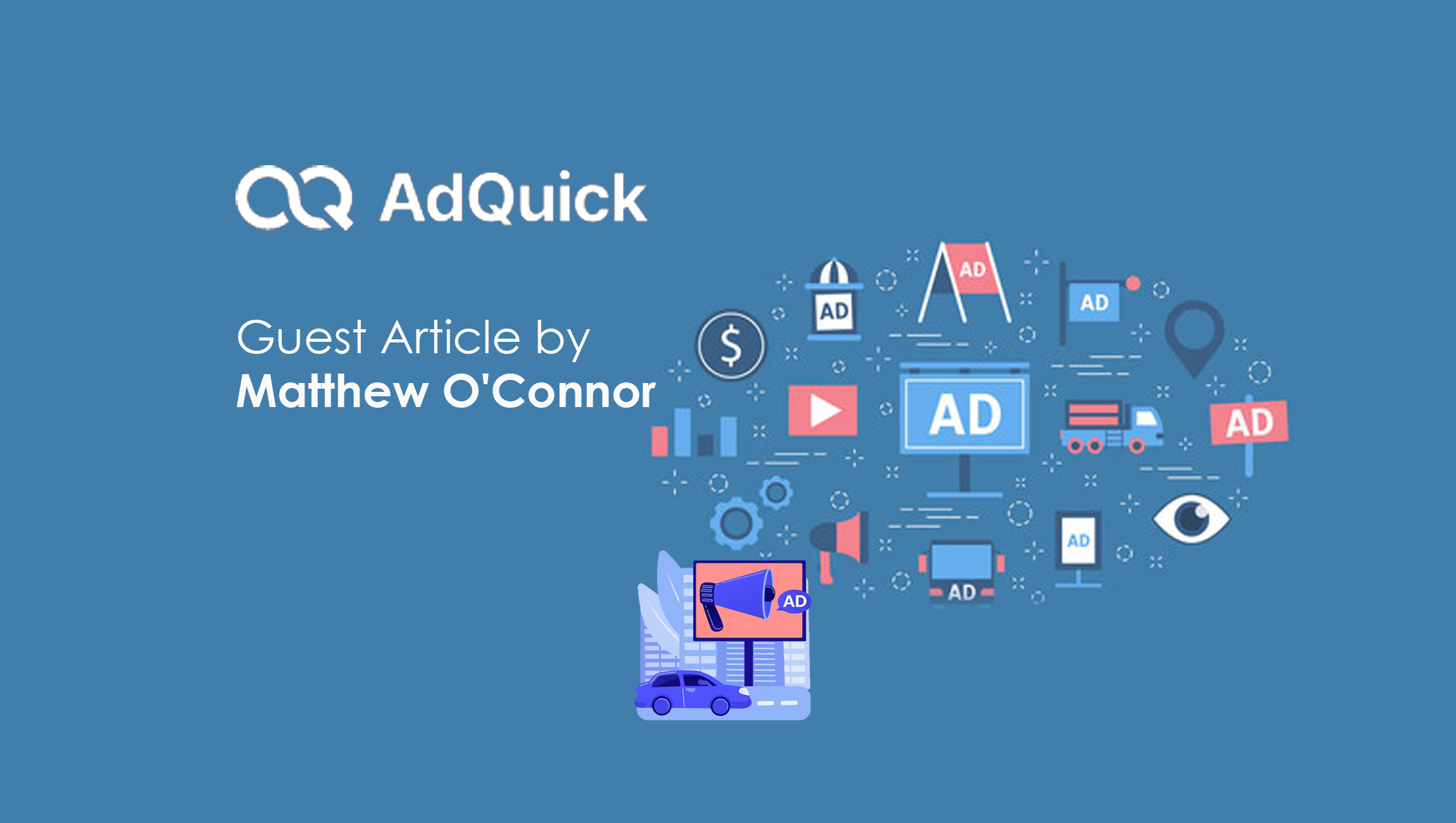With inflation hitting every industry, the B2B environment is tightening its proverbial belt. Cost containment, a pause on spending, pricing adjustments — all these are standard measures companies take to combat rising inflation. Steps one and two are typically applied to marketing, whose budget is always one of the first on the chopping block. However, as indications of an economic downtown increase, many companies are heading in a different direction.
Marketing Technology News: MarTech Interview with Laura Goldberg, CMO at Constant Contact
They’re choosing to shake up their media mix and maximize their ROI with out-of-home (OOH) advertising, which offers several notable advantages for B2B marketers:
1. Greater Affordability
Chances are good you don’t have an unlimited marketing budget. As advertising prices rise and times get tougher, the best way to optimize your budget and reach buyers is to spend it on the most cost-effective advertising method. OOH offers some of the lowest CPMs around, according to a 2022 comparison of major U.S. media by Solomon Partners.
The report shows OOH CPMs between $2 and $3, with online mobile display advertising claiming the only spot with a lower CPM. The difference is significant when you compare these rates with other digital and traditional marketing channels.
2. Lasting Impact
While affordability is important, cost is just one factor in it. Outdoor advertising delivers a lasting impact that other media find hard to beat. OOH ads are far more immersive and memorable than digital ads with few-second visibility. Because they exist in the physical world, OOH ads attract buyers’ attention more easily and retain it for longer. This “halo effect” helps keep a brand alive in the buyer’s mind and extends the brand experience beyond the capability of most other media types.
3. Stronger Recall
Statistics show OOH advertising drives the highest ad recall of all media channels, with a 67% upper limit for OOH print and 82% for digital, compared with 62% for TV, its closest competitor. Because decision-makers see these big, bold OOH ads in real life and often in a relevant context, the message becomes more meaningful to them, and their minds retain it for longer. This boosts the effectiveness of the medium from a brand recall viewpoint.
4. Higher ROI
According to a report by the Out-of-Home Advertising Association of America (OAAA), OOH delivers the highest ROI of all media channels. The low cost of advertising combined with the brand recall capability creates higher returns and better value for every marketing dollar spent. Researchers examined the actions individuals took after exposure to a range of activities, such as searching online, posting content on social media, downloading apps, and making online purchases. They discovered that although four percent of ad spend went to OOH compared with 68% that went to TV advertising, both media generated a similar percentage of consumer actions.
5. Broader Reach
The further your advertising reach extends, the higher the value and your return on investment. With consumers cutting the cable cord in record numbers in favor of streaming, TV advertising no longer has the broad reach it once did. Radio listenership has declined in favor of podcasts and streaming music, and statistics from HootSuite show that 42.7% of internet users worldwide aged 16-64 now use ad-blocking tools. This makes people harder to reach than ever before.
Thankfully, that doesn’t apply to OOH. In fact, new research shows that 77% of consumers notice their physical surroundings more now than they did before the pandemic. As people at your target accounts reduce screen time and reconnect with nature and the outdoors, many are noticing OOH ads more. Since the same study shows 80% of respondents made a purchase after seeing an OOH ad, the medium’s power is indisputable.
6. Robust Targeting
B2B marketers may know better than anyone that data-driven ad targeting is critical to reaching the right people with the right message at the right time. Some advertising media are better than others at achieving this, but the days of mass marketing are over. One of OOH’s strengths is its robust targeting capabilities. In the past, advertisers chose OOH media based on criteria such as geographic location. Now, organizations can use real data to identify consumer and buyer movement patterns, behavioral trends, weather developments, and current news events, to drive their programmatic OOH. For example, this is particularly relevant when OOH ads are placed around the vicinity of key industry conferences.
7. Creative Convenience
Most digital advertising channels offer the option to change creative instantly, and OOH is no exception. A leading Australian digital outdoor company conducted a neuroscience study that shows revolving creative designs deliver a 38% higher impact than static creatives. Moreover, with programmatic OOH, advertisers can use up-to-date metrics to see what’s working best and use this knowledge to inform adjustments to their campaigns.
8. Meaningful Metrics
Modern marketing is nothing without meaningful metrics, which OOH delivers in spades. In the past, OOH impressions were tracked by traffic counts and daily effective circulation results to estimate their advertising reach. Now, advertisers can use travel surveys, data modeling, and census data, among multiple other methods, to determine how many of their target audience saw their campaign.
B2B marketers can pull location or mobile data in real-time or use location solutions such as those delivered by Geopath to discover consumers’ movements and demographic information. They can track pedestrian numbers, traffic volumes, and vehicle occupancy. Data processing can even determine how many people who passed an advertisement visited a website or requested a demo.
Marketing Technology News: Accelerating Digital Transformation: Simple Solutions for Complex Problems
Proving the Point
The proof is always in the numbers. Despite soaring inflation, OOH spending continues to climb as the world returns to more-or-less normal life. According to the OAAA report, OOH ad revenues almost reached pre-pandemic levels when they rose by 28.9% over the previous year to $2.62 billion in Q2 2022. With the demand for digital out-of-home (DOOH) advertising also mounting, this medium isn’t going away anytime soon. As we head toward 2023, the stars are aligned for B2B companies to optimize their marketing budgets by investing in OOH.











